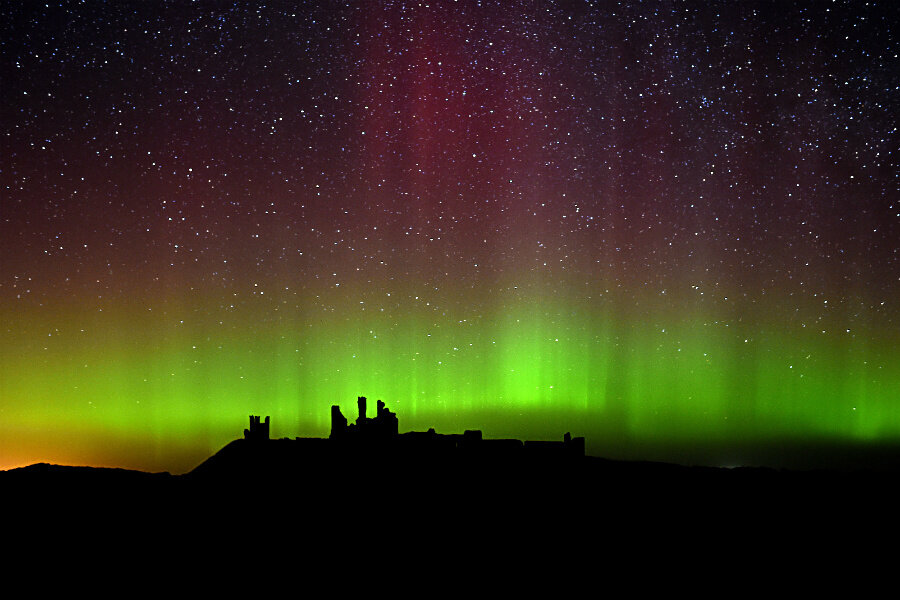Massive solar storms coming: Where to watch aurora borealis
Loading...
The Northern Lights were visible to more people than usual Monday evening, and the shimmering solar auroras could return Wednesday night.
Auroras are typically seen only at very high latitudes, but since Monday have been visible in the United States as far south as Georgia, Colorado, Virginia, and Arkansas.
The lights first appeared in the sky when the Earth was hit with a severe solar storm on Monday, caused by a blast of magnetic plasma shot out of the sun at a much faster speed than usual. The solar storm was the biggest that Earth has seen at least since March, but possibly since September 2005, according to the National Oceanic and Atmospheric Administration.
A second geomagnetic storm is expected to hit the earth Wednesday evening, following the eruption of another coronal mass ejection, or CME, from the same active region of the sun.
It's unknown exactly how far south the auroras caused by Wednesday's storm will be visible, but the lights displays could continue until Thursday night, meteorologists say.
Solar flares are waves of charged plasma that come streaming toward our planet at about four million miles per hour. When they hit the Earth's upper atmosphere they release visible light and are channeled toward the Earth's poles by the planet's magnetic field. The norther aurora borealis is called the northern lights. The displays over the southern pole are called the southern lights or aurora australis.
As of Monday, there have been no reports of damage caused by the storm, but the electrical grid and GPS probably had current fluctuations that they could handle, said NOAA space weather physicist Doug Biesecker. Similar fluctuations are expected Wednesday.
To monitor the storm's activity and find out whether you'll be able to see the lights from your home, you can check the storm's G-scale rating or the Planetary K-Index on the Space Weather Prediction Center website.








